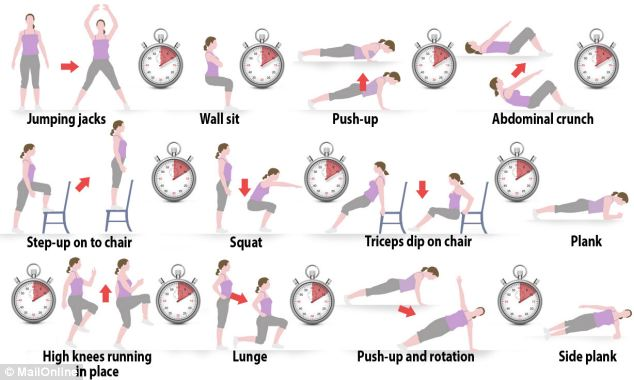Vigorous exercise is good for your health, but only if it’s limited to a maximum daily dose of between 30 and 50 minutes a day say some researchers.
The idea that more and more high intensity exercise, such as marathons, can only do you good, is a myth say the US cardiologists, and the evidence shows that it’s likely to do more harm than good to your heart. Extreme distance training, including very long bike rides, can cause temporary changes in heart structure and elevations of heart health biomarkers, all of which return to normal within one week.
But for some individuals, over the months and years of repetitive injury, this process can lead to the development of patchy scarring of certain areas of the heart, and abnormal heart rhythms.
In one study, approximately 12 per cent of apparently healthy marathon runners showed evidence for patchy heart scarring, and the heart disease event rate during a two-year follow up was significantly higher in marathon runners than in runners not doing marathons. The phenomenon has been dubbed “Phidippides cardiomyopathy” – after the fatal heart damage suffered by the original marathon runner who died.
The suggestion is: Everything in moderation
If you really want to do a marathon or full distance triathlon, etc, it may be best to do just one or a few and then proceed to safer and healthier exercise patterns.
A routine of moderate physical activity will add life to your years as well as years to your life. In contrast, running too far, too fast, and for too many years may speed one’s progress towards the finishing line of life.
So what sort of benefits can one expect to gain?
Research by expert epidemiologist I-Min Lee of Harvard Medical School and her associates on over 650,000 people over 40, followed on average for 10 years produced these findings:
Almost any amount of regular exercise promotes longevity. And even small amounts of exercise can make a big difference.
For example, people who chose to walk briskly for just 11 minutes per day (75 minutes each week) added 1.8 years to their life, compared to non-exercisers. That’s a nice boost for 11 minutes of walking per day! And it gets better. Those who walked 22 minutes every day (or 150 minutes/week or 30 minutes 5 days a week, following the federal recommendation) gained 3.4 years of life on average.
The people who increased their life span the most walked 43 minutes a day, lengthening their life by an average of 4.2 years. After 43 minutes, the benefits of longevity tended to level off. And for the runners and other vigorous exercisers: you received the same benefit, but in about half the time.
High Intensity Interval Training (HIIT)
The great news is the increasing research on the incredible benefits of High Intensity Interval Training (HIIT). There’s very good evidence that HIIT provides many of the fitness benefits of prolonged endurance training but in much less time. There are many versions of HIIT, but the core premise involves maximum exertion followed by a quick rest period for a set of intervals. For example, a good starter workout is working out as hard and fast as you can for 1 minute and then go easy for 2 minutes. Repeat that 3-minute interval five times for a 15-minute, fat-blasting workout. I typically recommend using an elliptical machine or recumbent bike, but you can just as easily perform a high intensity routine without any equipment at all.
Research shows you can achieve more progress in a mere 15 minutes of interval training (done three times a week) than the girl jogging on the treadmill for an hour. According to a study presented at the American College of Sports Medicine Annual Meeting, just 2 weeks of high-intensity intervals improves your aerobic capacity as much as 6 to 8 weeks of endurance training. The best part is that using the Tabata Training Method you can complete an effective HIIT workout in just 4 minutes!
Here’s a pictograph of a sample workout. In rapid succession do 30 seconds of the activity and then rest 10-15 seconds.

The proven benefits of HIIT?
- Significantly improving your insulin sensitivity, especially if you’re on a low-processed food, low sugar/low-grain diet
- Optimizing your cholesterol ratios, when combined with a proper diet
- Boosting fat metabolism and optimizing your body fat percentage
- Virtually eliminating type 2 diabetes and high blood pressure
- Naturally boosting your levels of human growth hormone (HGH)
- Increasing your aerobic capacity
For some guidelines and ideas on HIIT workouts check out www.litealloy.com. Always listen to your body and train within your level of fitness. As with all exercise programs, prior medical clearance from a physician is recommended.
Some additional cautions:
- Anyone who is overweight/obese, detrained, previously injured, elderly or have other complicating health conditions should always consult their healthcare provider before starting intense training
- Individuals with hypertension or heart disease, are not advised to do isometric exercises (wall sit, plank, and side plank) and should instead be substituted with dynamic exercises.
- For all individuals, the Valsalva maneuver should be avoided, particularly for the isometric exercises.
- It is essential that individuals understand proper exercise form and technique.